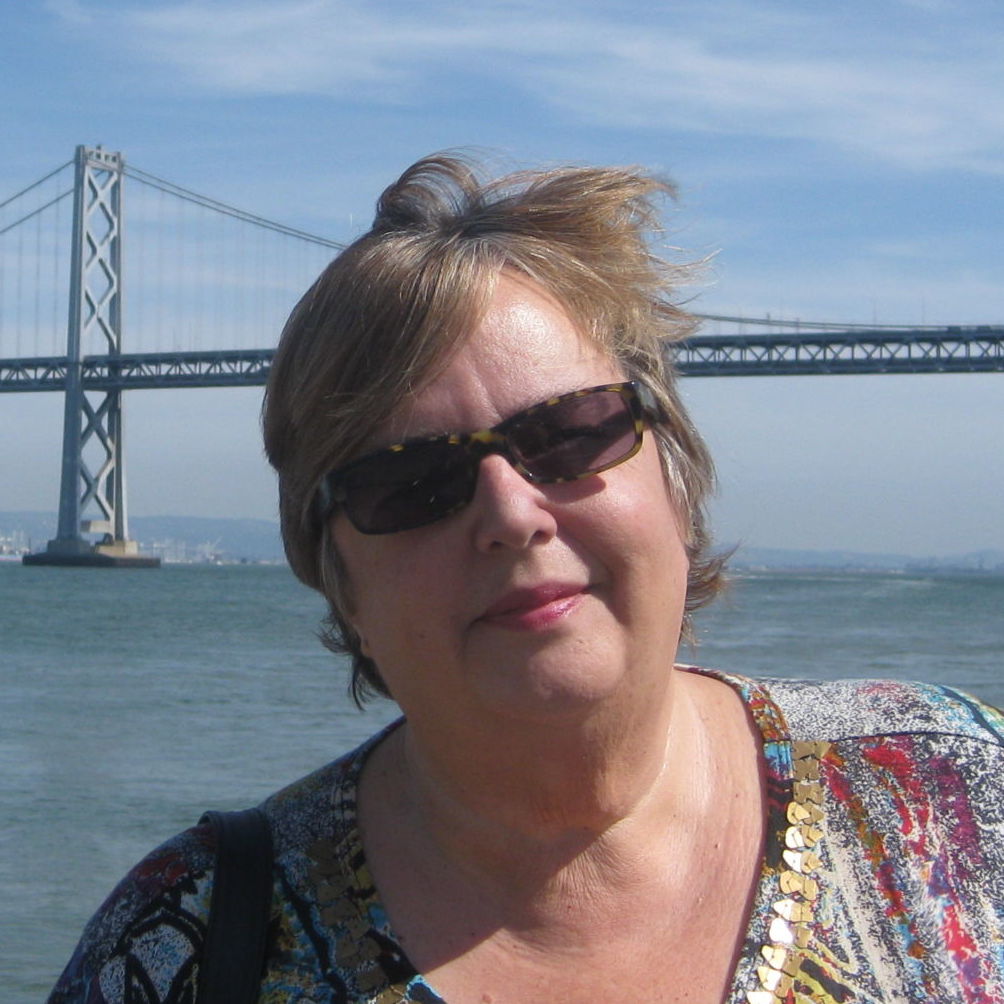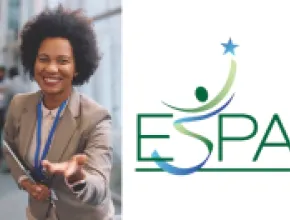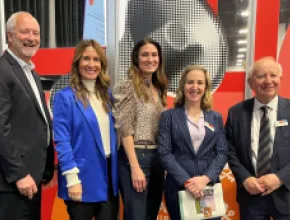Given the weak dollar and the increasingly global nature of just about any kind of business or industry, this should be a booming time for overseas attendance at U.S. conventions and trade shows. It’s not.
While many associations and trade show organizers are looking to boost their international reach, especially when it comes to such emerging markets as China and India, tight visa regulations and a crackdown on illegal immigration are putting some formidable roadblocks in the way.
“There has been a convergence of several issues that have seriously impacted international travel to the U.S.,” says Stephen Hacker, president and CEO of the International Association of Exhibitions and Events (IAEE), which has joined other travel industry organizations such as the National Business Travel Association in lobbying efforts in Washington, D.C., in support of relaxing visa regulations for entry into the U.S.
“The Department of Homeland Security wants to keep out anyone perceived to be a threat, so you must have legitimate business to come in. However, even then it’s a struggle,” Hacker says. “You also have to prove that you are not immigrating. The default position is keep out.”
While visitors from the 27 Visa Waiver countries, which are primarily in Western Europe, have little problem entering the U.S. providing they have the proper passports, Hacker notes that it can be very difficult for people coming in from Asia and Africa.
“Demographics are key in determining who can get a visa,” he says. “It’s harder for people coming in from emerging Third World economies, including India and China. It’s especially hard if you’re a single male under 50 who doesn’t own property or who has a lot of family in the U.S. You need to show that you have an incentive to return to your home country.”
Elizabeth Hyman, vice president-international for the Consumer Electronics Association (CEA), which draws large numbers of international buyers to its mammoth annual Consumer Electronics Show in Las Vegas, adds that Chinese visa applicants often need to show U.S. Dept. of State (USDOS) officials that they have traveled outside China before.
“They need to show that they have a record of returning to the country,” she says, adding that other problems faced by visa applicants include a lack of adequate manpower to process all the requests. “In Brazil, for example, there’s a three-month-month waiting list to obtain a U.S. visa. The State Department is stretched very thin in handling the backlog.”
Just how serious is the problem? While figures from the U.S. Tourism Industry Association report that international travel to the U.S. has fallen by 17 percent since 2001, a survey conducted by PCMA last year indicates that overseas attendance at conventions and trade shows has been holding steady. A majority of the associations polled (53 percent) said overseas attendance was flat between 2000 to 2005, while 29 percent reported an increase during that period.
However, this is scant comfort to those in the trade show industry who feel that international attendance should be skyrocketing.
“During the period when tourism here fell by 17 percent, it’s been off the charts in other countries,” Hacker says. “With our dollar down, there should be a tidal wave of tourism here. So much potential is being lost.”
According to Hacker, IAEE members are reporting “horror stories” such as selling a large pavilion for up to 100 Chinese exhibitors, only to have the business canceled just days before the show because of visa problems.
“This kind of thing is happening frequently,” he says. “The cost, the anxiety, the unpredictability are all enormous.”
Doug Ducate, president and CEO of the Center for Exhibition Industry Research, says many in the trade show industry are concerned that potential buyers are simply choosing to attend shows in countries where entry is easier.
“It stands to reason that some buyers are looking to shows in Europe instead of in the U.S. because they may feel more welcome there,” he says. “There is plenty of competition for their business out there.”
Some in the industry also worry that the rising cost of fuel—and therefore air travel—may also put a damper on overseas attendance.
“Fuel costs will have a certain impact, just as they are with domestic travel,” says Stephen Sind, president and CEO of Global Event Strategies, a Tucson, Ariz.-based consultancy. “But it won’t stop it dead. Most likely it will mean that organizations will send their top two people rather than a lot of people.”
Growing Pains
Despite the challenges, many in the industry say the rewards of growing international attendance are well worth any hassles involved. While not all U.S.-based associations are interested in growing globally, many are eager to not only boost overseas attendance, but increase their international membership and presence.
“We’re seeing that many medical and other professional organizations are viewing international attendance and growth as key factors these days,” says June Matsumoto, director of international sales and marketing for the Hawaii Convention Center in Honolulu. “In particular, a lot of medical associations have maxed out their domestic membership and are seeing great growth potential in Asia. A lot of medical associations in both Europe and North America are now taking the lead in providing continuing medical education for the Asian market.”
Supporting this observation are figures from the 2008 Special Report on Healthcare Meeting and Exhibit Globalization recently released by the Healthcare Convention and Exhibitors Association showing that overseas participants now account for 27 percent of attendance at U.S.-based medical meetings.
Even higher overseas attendance characterizes the annual meeting of the Radiological Society of North America, which drew over 62,000 delegates to its convention last November in Chicago. According to RSNA Assistant Executive Director Steve Drew, oversees attendees now account for nearly 40 percent of the total, up from about 25 percent five years ago.
While Drew credits the “unparalleled” educational offerings at the meeting to much of the growth, he also credits the weak dollar and the fact that many attendees have gotten more comfortable with visa requirements.
“More people are familiar with the drill—they know they have to go to the consulate in advance, and so on,” he says. “In fact, some of our attendees begin planning their trip to the next meeting as soon as they get home from the current meeting. We have all the information up on our website early enough so they can do this.”
When it comes to international growth, the first step for most associations is to look at expanding overseas attendance and exhibitor participation at their U.S. conventions and trade shows, says Cherif Moujabber, president of Boston-based Creative Expos and Conferences, which has association clients that include the International Council of Shopping Centers, the Society of the Plastic Industry and the National Cable and Telecommunications Association.
“The show allows the association to test the international waters,” Moujabber says. “Those who have been seeing international attendance jump at their shows may have good reason to think that their international membership can grow, too. And it may lead to creating an overseas show as well. If you see droves of people coming in from a particular country, there may be a need to do a show there.”
Perhaps the biggest reason to court overseas attendees is their positive impact on the bottom line.
“International attendance is a big added value for the show, especially for the exhibitors,” Sind says. “Exhibitors want to reach these foreign buyers and the organizer can promote this as an added reason to participate.”
Moujabber agrees, adding that overseas attendees tend to spend more than their domestic counterparts.
“The international attendee is very desirable on many levels,” he says. “They stay for a long time—on average, eight days—and they are likely to be repeat customers. Best of all, they are likely to be serious participants in the show. You don’t come all that way unless you are a serious buyer.”
Mark Theis, executive vice president of the Chicago Convention & Tourism Board (CTB), agrees, adding that “each attendee and exhibitor from overseas is a major customer. Even if we just bring in four exhibitors and 35 buyers from a certain country, it means a huge transaction process is set in motion.”
Patrick LaFramboise, president and CEO of the International Woodworkers Federation (IWF) says that boosting international attendance at the organization’s annual show, which is expected to draw some 40,000 attendees when it opens in Atlanta in late August, has become a priority in recent years.
“International attendance is growing at our show, but I wish it was growing more than it is,” he says. “It’s important for our position in the marketplace. We want to be an international forum for the woodworking industry, so we need both international buyers and exhibitors.”
Despite the challenges posed by visa restrictions, LaFramoise says IWF show attendance from Latin America and Asia, particularly China and Taiwan, has grown steadily over the past five years.
Moujabber adds that IWF’s experience is one that extends across many industries.
“Almost everybody wants the BRIC countries—Brazil, Russia, India, and China,” he says. “There’s not one show out there that does not target China. These markets are getting bigger all the time.”
Proactive Stance
Some associations, show organizers and destinations are taking matters into their hands to encourage as much overseas growth as possible. At IWF, LaFramboise says the organization gets involved with helping attendees through the visa application process. The first step is to issue a letter of invitation, so that attendees have something tangible to show officials when applying for their U.S. visas.
“We know that visa requirements take a lot of time for people on the other side, so we advise them to start the process three or four months in advance,” LaFramboise says. “It’s kind of a Catch-22 because you can’t apply six months ahead, and yet you need to make sure you have allowed enough time for your application to make it through any backlog in time for your departure. About 120 days is ideal.”
IWF and other associations with major trade shows are hoping to see a jump in attendance through their participation in the new U.S. Dept. of Commerce’s International Buyers Program designed to help show organizers generate attendance among overseas buyers.
“You sign up for the buyer’s program, and if you’re selected they spread the word about the show at embassies, consulates and trade missions around the world,” LaFramboise says. “We haven’t tested the waters yet, but it looks good. We know we have several delegations coming in to our next show from Mexico, Ecuador and Europe as a result.”
At CEA, which started an international global outreach program in 2006 to beef up overseas attendance at the Consumer Electronics Show, proactive measures include meeting with USDOS agents in countries such as Brazil and China.
“We’re continually talking with them about who we are and what we’re doing,” Hyman says. “So when someone applies for a visa to attend our show, they’ll know what’s at stake.”
According to Hyman, annual attendance at next January’s show is expected to top 140,000, including a record 28,000 attendees from 140 countries outside the U.S.
Destination Partners
With a vested interest in boosting international tourism themselves, some CVBs and convention facilities are stepping up to the plate in assisting association customers. However, some in the trade show industry say most CVBs are not as proactive as they should be.
“In general, the CVBs are not doing a great job on overseas promotion, with two big exceptions being Chicago and Las Vegas,” Moujabber says. “For instance, more cities in the South should be appealing to the Latin American market. I think this will change dramatically over the next few years as more show organizers will start demanding more support.”
For the Chicago CTB, growing international trade show attendance has become a major focus, according to Theis. The bureau plans to lead an international trade mission to China in November with up to 40 of its top trade show customers and will do a second trade mission to Dubai next spring. The missions will include several days of one-on-one appointments with potential buyers and exhibitors.
“Chicago, like a lot of cities, has pretty much maxed out on our domestic attendance at conventions and trade shows,” he says. “So we’re beefing up our resources.”
International attendance at Chicago trade shows hit record numbers last year, primarily from Europe, he says, adding that the strong euro versus the dollar was a major incentive.
“And we’ve been proactive with Europe. We feel we can help our customers realize 5 to 10 percent growth at the international level,” he says.
The CTB launched a new initiative last spring that creates customized ads in European markets to promote specific shows. So far the bureau has done customized ads for the National Restaurant Association and the International Housewares Show.
Now more attention is being paid to Asia, which Theis views as having the potential to become a significant growth market for Chicago.
“The Asia market has traditionally looked at New York, Los Angeles and San Francisco, but they’re starting to look at new cities,” he says. “China and Japan are both up for us.”
Trade missions designed to boost show attendance have been part of the Las Vegas Convention & Visitors Authority’s (LVCVA) strategy to draw international visitors since 2004, says Chris Meyer, the LVCA’s vice president of convention sales. Organizers who represent shows meeting at the Las Vegas Convention Center and that draw attendees from 10 or more countries are eligible to attend. So far the LVCA has led eight Trade Show Trade Missions to places that include China, Brazil, India, and Eastern Europe.
“Show organizers came to us and asked us to help promote their shows to overseas buyers and exhibitors,” Meyer says. “The feedback is overwhelmingly positive. The National Association of Broadcasters saw a 400 percent increase in buyers from Brazil after the trade missions there.”
Along with finding potential buyers, the LVCVA missions meet with State Department officials and consulates in the countries visited to let them now about the upcoming trade shows being promoted.
“We pre-register with the State Department, so they can verify the trade shows data with the data they are getting from the applicants,” Meyer says.
In general, the LVCVA has been stepping up its overall marketing to international visitors, he adds.
“We’ve greatly beefed up our international marketing department and have hired a new vice president of international brand strategy,” Meyer says. “We’ve added more staff and recently opened four more overseas offices, giving us a total of 12. We’ve given them objectives and accountability measurements—one of them is for attendance at trade shows. The beauty of trade shows is that everyone is registered, so we know where they are coming from.”
Also taking a proactive stance is the Hawaii Convention Center (HCC), which launched its Global Outreach Program last year to help its association clients build international business. According to Matsumoto, the initiative has helped bring about a 10 percent rise in overseas attendance at center events during the past year.
Through Global Outreach, the convention center staff connects association with sister association and exhibitors overseas. It also creates “microsites” for client’s websites with information about a meeting, including housing and agendas, translated into a variety of languages, including Mandarin, Japanese and Korean.
While primarily focused on Asia, this summer the HCC is working with the American Dental Association, which is meeting at the center next year, on microsites for the European market.
“We work with the association to determine their target markets—it’s not a one-size-fits-all,” Matsumoto says.
At the same time, the HCC staff also helps potential international attendees clear some of the U.S. entry hurdles involved.
“Visa requirements are the biggest challenge, especially with China and India,” she notes. “There’s not much we can do to change policy, but we are explaining the process to people and taking the mystery out of it. We’re also working with travel companies in China. If they are designated agencies who can book travel to the U.S., they are familiar with the visa requirements. They have travel packages available and we list these for the association so they can tap into those packages.”
Overseas Meetings
Just as associations are striving to draw more overseas attendees to their U.S.-based events, some are also hoping to bring more of their own meetings overseas. According to Michael Payne, executive vice president-managing director for Smith Bucklin, a Washington, D.C.-based association management firm, the demand from clients has led to a partnership between Smith-Bucklin and MCI, a meetings management firm based in Geneva, Switzerland.
“A lot of groups with an international focus are doing more events overseas now,” he says. “A lot of our clients began asking for more help overseas, so we joined with MCI to serve as a vehicle to handle offshore destinations. They have resources in places such as India and South America, including venues and hotels.”
But while the weak dollar is encouraging overseas attendance in the U.S., it poses a big challenge for meetings going in the reverse direction.
Independent planner Mary Ann Bobrow, president of Bobrow & Associates in Sacramento, Calif., is hoping to take a future annual meeting for her client, the International Textiles & Apparel Association, to an overseas location, but she finds the prospect daunting.
“The biggest problem is definitely cost, especially in Europe,” she says. “I was at IMEX in Germany last April and it was shocking—breakfast was about $45.”
Payne notes that many associations are also doing more these days to work with their counterparts in other countries.
“More associations, especially medical groups, are partnering with associations in Europe and Asia,” he says. “Many will invite them to attend their meetings in the U.S. or bring then in as speakers. Some groups are limited by their bylaws to add overseas members, so they are creating affiliate membership categories so they can join.”







